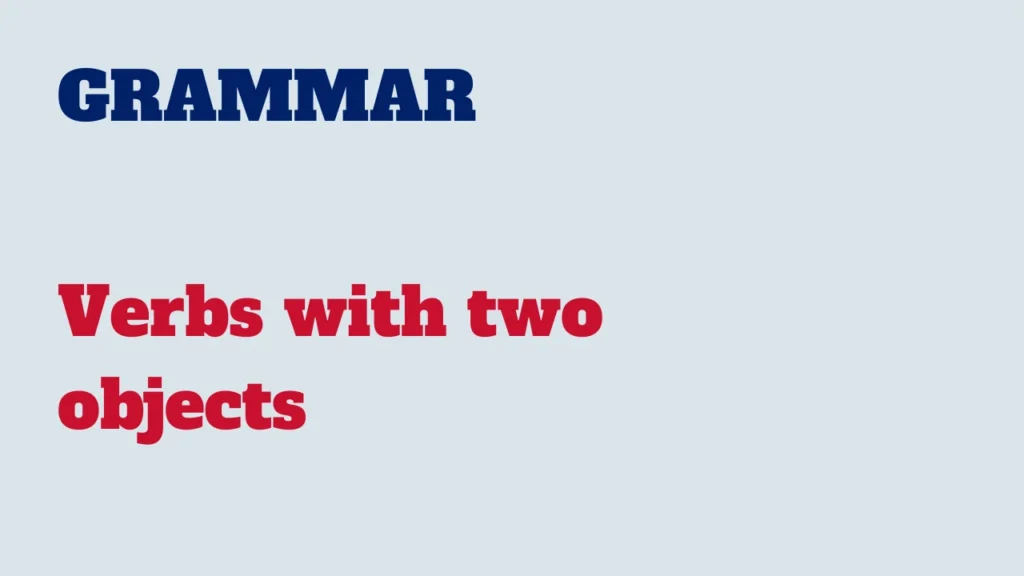Some verbs in English allow for a construction with two objects, often referred to as the double object construction. In this structure, a verb is followed by both a direct object and an indirect object. The direct object receives the action of the verb, while the indirect object receives the direct object.

In this lesson, we’ll delve into the structure, usage, and examples of verbs with two objects.
Structure:
Verb + Indirect object + Direct object
Examples of verbs with two objects:
Give:
She gave him a book.
(Indirect object: him; Direct object: a book)
Show:
He showed me the new painting.
(Indirect object: me; Direct object: the new painting)
Send:
They sent us a postcard.
(Indirect object: us; Direct object: a postcard)
Tell:
Please tell her the news.
(Indirect object: her; Direct object: the news)
Indirect object placement:
The indirect object usually comes before the direct object.
It answers the question “to/for whom” or “to/for what.”
Common two-object verbs used:
Other verbs that commonly use the double object construction include “offer,” “buy,” “show,” “teach,” “bring,” and “promise.”
Additional tips:
Pronoun usage:
When using pronouns as indirect or direct objects, they have specific forms (e.g., me, him, her, us, them).
Flexibility:
While the double object construction is common, some verbs may also take prepositions (e.g., “to,” “for”) to indicate the indirect object.
Understanding and using verbs with two objects adds richness to your language, allowing you to convey actions and recipients more precisely. Practice incorporating this structure into your sentences to enhance your communication skills. Happy learning!



